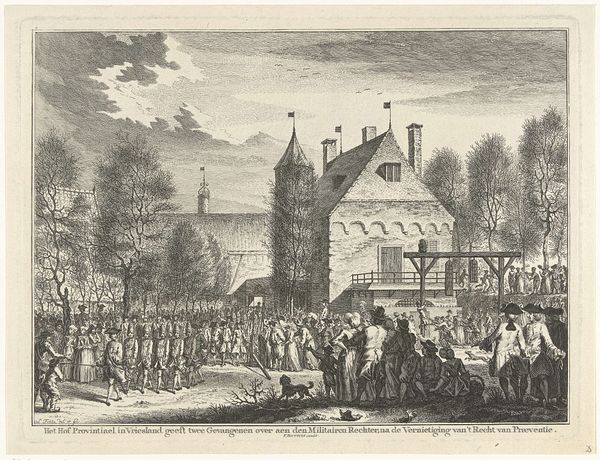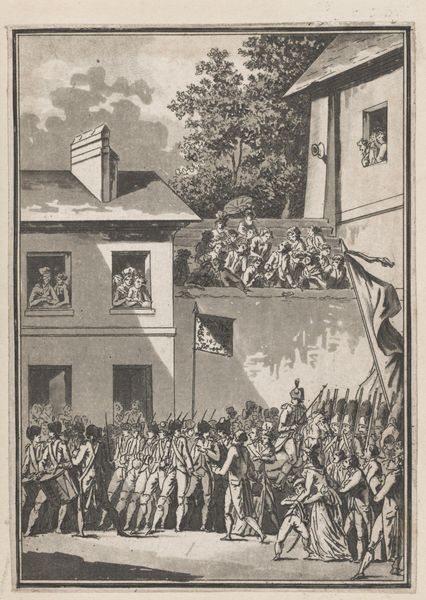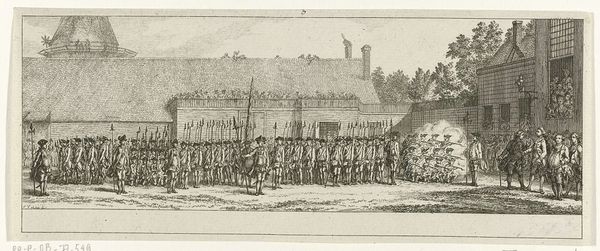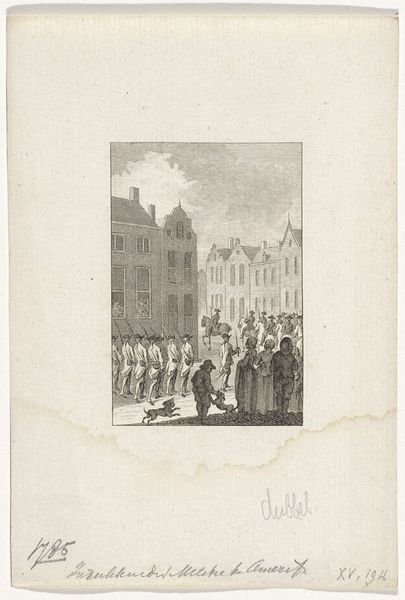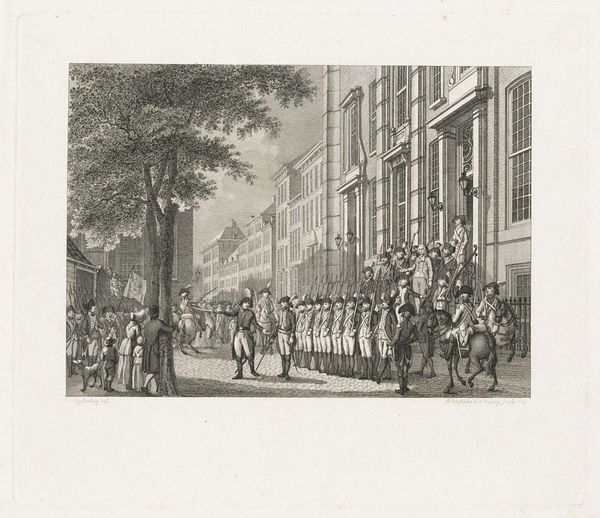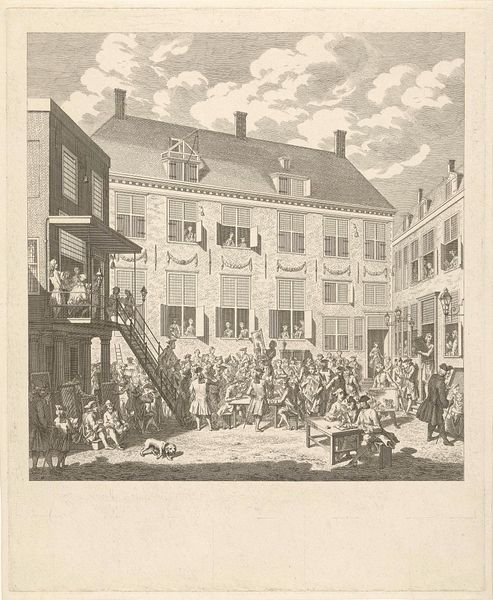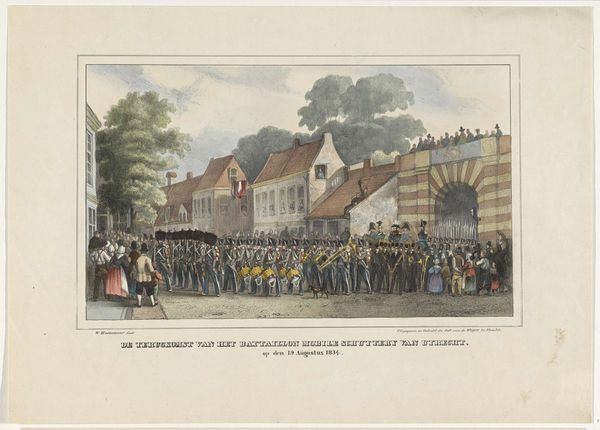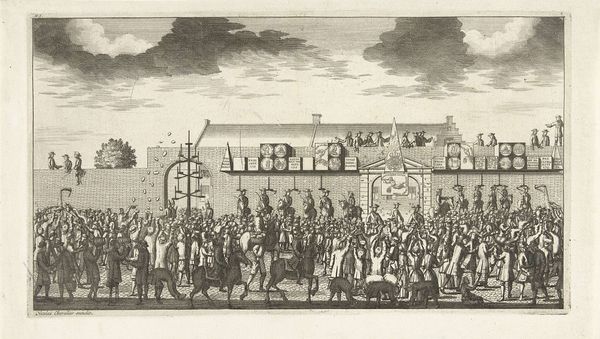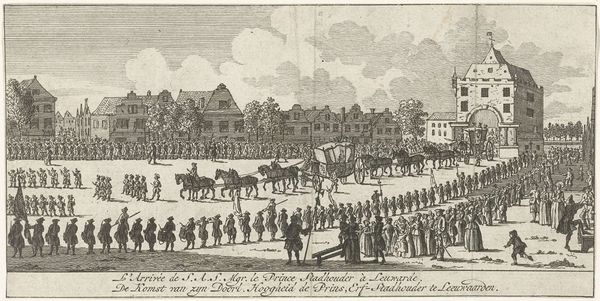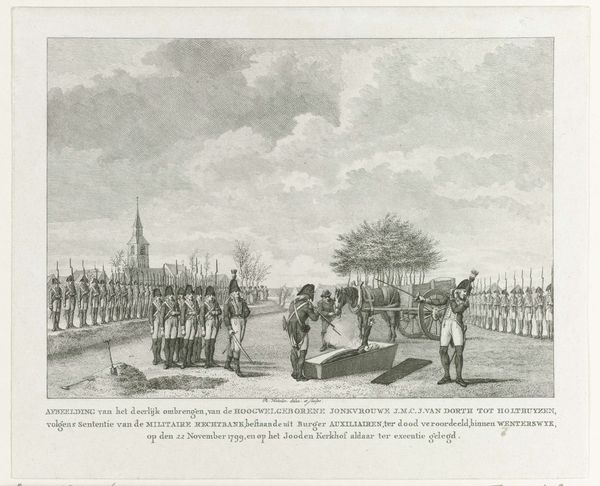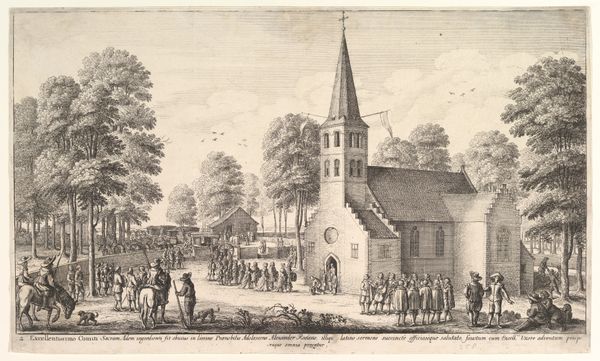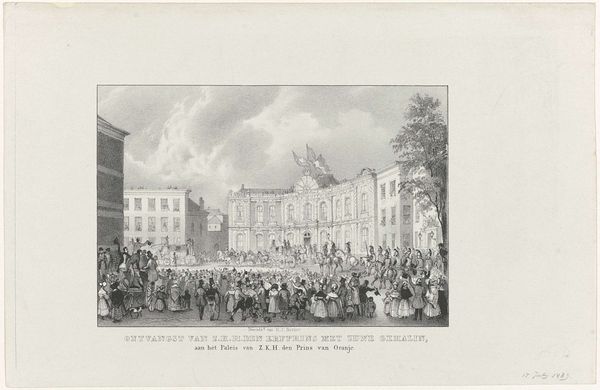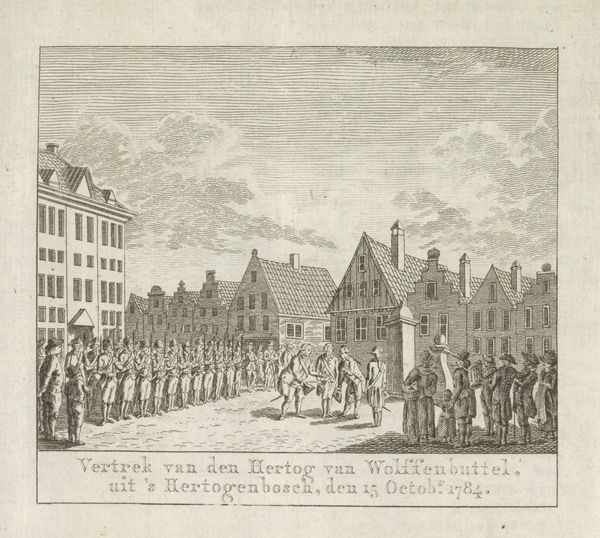
print, engraving
#
dutch-golden-age
# print
#
landscape
#
cityscape
#
genre-painting
#
engraving
#
realism
Dimensions: height 225 mm, width 278 mm
Copyright: Rijks Museum: Open Domain
Editor: This is Reinier Vinkeles's "Leengerecht te Zutphen, 1764," though it was made in 1777. It's an engraving, so it's very detailed, but in a muted palette. I’m immediately struck by how many people are gathered, all men, and the sense of… expectation. What can you tell me about it? Curator: That expectation you sense is key. Let’s think about 1777. What societal shifts were brewing, especially regarding class and gender? The concentration of men isn't accidental; it highlights the power dynamics of the period, excluding women and reinforcing a male-dominated public sphere. How does understanding that influence your interpretation of the image? Editor: Well, it makes me think about who is represented and who isn't. All those men are participating in something, a "Leengerecht," which I believe is some kind of manorial court, and women have no visible part in it. Curator: Exactly. This seemingly neutral depiction of a city scene actually reinforces existing hierarchies. It naturalizes male authority. Consider the location too: architecture is never apolitical. What kind of statement is the artist making through it? Editor: So the buildings in the background project the wealth and privilege of the ruling class? Maybe I had initially seen this as just a historical record, but now it seems to legitimize that power structure through its very composition. Curator: Precisely. By simply documenting, it subtly endorses. We can look at it as more than just a cityscape, right? It becomes a political statement reflecting the status quo, whether intentionally or not. Considering that there may have been dissenting voices against male dominance and aristocracy at the time, how does this engraving's perspective change for you? Editor: This helps me look beyond just the aesthetic qualities. Now, the act of choosing this subject, framing it this way, it all speaks to the power structures of the time. It’s much more layered than I initially thought! Curator: That’s precisely what situating art within historical and social contexts allows us to do.
Comments
No comments
Be the first to comment and join the conversation on the ultimate creative platform.
